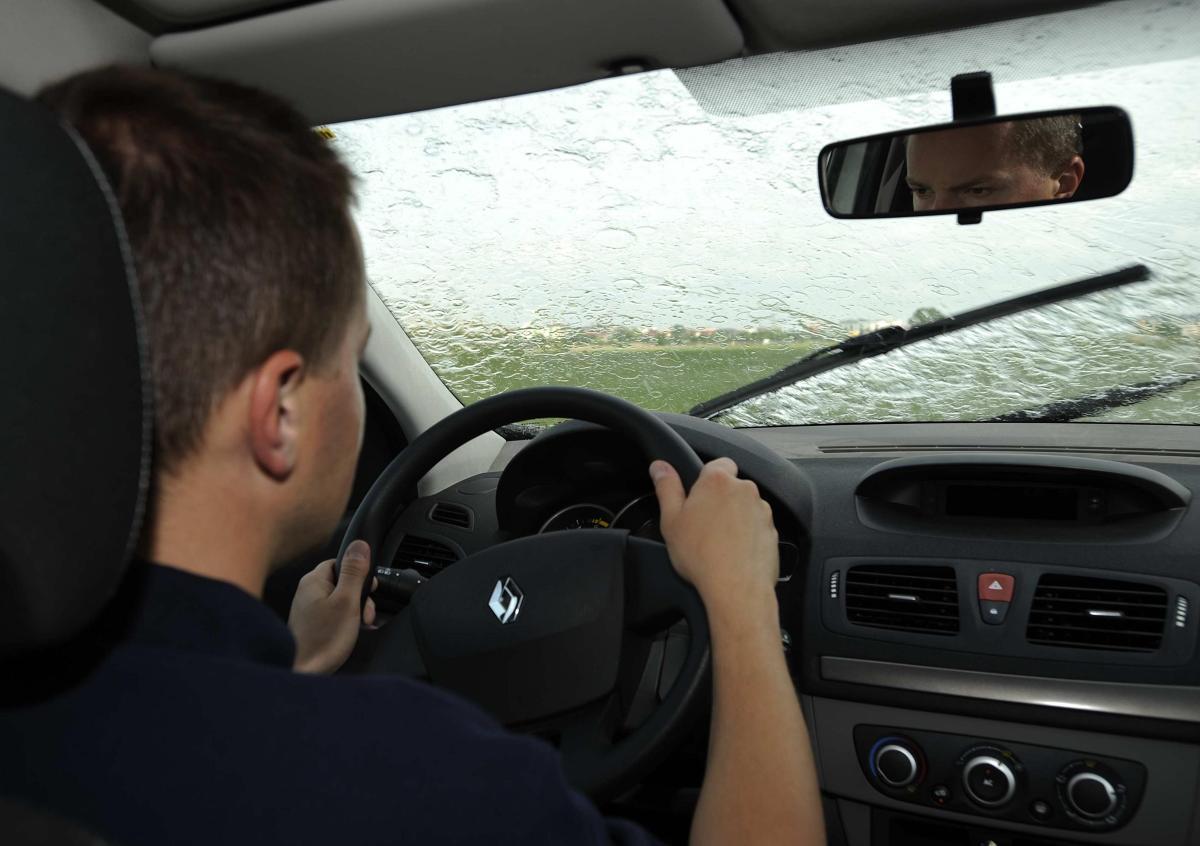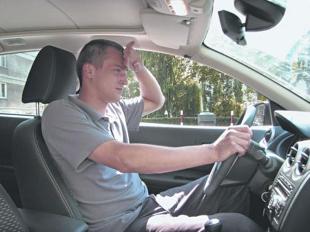
How does changing weather conditions affect a car?
 According to the statistics of the General Directorate of Police, last year the largest number of traffic accidents occurred in the summer, with good weather conditions, cloudiness and precipitation. Automotive experts emphasize that changing summer weather conditions affect not only the well-being and safety of drivers, but also the performance of cars.
According to the statistics of the General Directorate of Police, last year the largest number of traffic accidents occurred in the summer, with good weather conditions, cloudiness and precipitation. Automotive experts emphasize that changing summer weather conditions affect not only the well-being and safety of drivers, but also the performance of cars.
 According to the Police Headquarters, last year the most accidents occurred in July and August. Accident statistics for the whole of 2013 show that most collisions occurred in good weather conditions. Among the most frequent atmospheric phenomena that occur during road traffic accidents, cloudiness was in second place, and precipitation was in third place.
According to the Police Headquarters, last year the most accidents occurred in July and August. Accident statistics for the whole of 2013 show that most collisions occurred in good weather conditions. Among the most frequent atmospheric phenomena that occur during road traffic accidents, cloudiness was in second place, and precipitation was in third place.
– The weather conditions typical for this year’s Polish summer: heat, strong storm, rain or hail, can affect not only the safety of driving and the well-being of drivers, but also the operation of their cars – for example. engine, brake system or battery. Vehicles are structurally prepared to operate at minus 30 degrees Celsius and plus 45 degrees Celsius, but only if they are fully operational, says Bohumil Papernek, automotive expert of the ProfiAuto network.
Experts emphasize that when driving in the heat, operating temperatures rise first of all.
in the lubrication system (engine, gearbox, differential) and in the cooling system. If these systems are working and drivers have taken care of the following elements - proper oil pressure, correct oil selection, serviceable thermostat, proper cooling fluid, efficient fans and a clean radiator - temperatures should remain within the recommended ranges. However, if not all components are working properly, for example, the car engine may overheat. This situation occurs, including if the liquid in the cooling system has not been checked and has been in operation for more than 3 years. The function of the fluid is not only to receive and transport heat, but also to lubricate the sealing system of the coolant pump, and its properties deteriorate over time.
During the heat of the summer, it is also important that the thermostat works correctly and whether – and at what point – the fans mounted on the radiator turn on. Usually, in hot weather, the fan continues to run for some time after the engine is turned off. If this is not the case, the operation of the temperature sensors and the fan switch must be checked at the service. In older cars, the radiator, which is stained on the inside and clogged with insects, can also affect the overheating of the system. Then it does not provide the proper flow and cooling of the liquid, which can lead to failure. Heat also does not contribute to the proper functioning of the battery. Not all drivers know that he tolerates high summer temperatures worse than low winter ones. “The service battery heats up and increases the dynamics of water evaporation, so on warm days it is necessary to check the electrolyte level and, possibly, top it up by adding distilled water,” recalls Vitold Rogovsky from the ProfiAuto network.
 Summer weather also has a negative effect on the braking system: in strong sunlight, the road temperature reaches 70 degrees Celsius, which causes the tire to “flow” on asphalt and significantly lengthen the braking distance. Low-quality brake pads exposed to heat are more likely to decay, i.e., loss of braking force, and more effort will be required to achieve an effective braking effect in front of an obstacle. Winter tires are also not suitable for high temperatures. The soft sole they are made of wears out very quickly and does not provide proper lateral support when cornering, which lengthens the braking distance and compromises the stability of the car.
Summer weather also has a negative effect on the braking system: in strong sunlight, the road temperature reaches 70 degrees Celsius, which causes the tire to “flow” on asphalt and significantly lengthen the braking distance. Low-quality brake pads exposed to heat are more likely to decay, i.e., loss of braking force, and more effort will be required to achieve an effective braking effect in front of an obstacle. Winter tires are also not suitable for high temperatures. The soft sole they are made of wears out very quickly and does not provide proper lateral support when cornering, which lengthens the braking distance and compromises the stability of the car.
In addition, the condition of the car can be adversely affected by heavy summer rains and storms. if its owner does not adapt the driving technique to the weather conditions. When driving in a thunderstorm, you should not be afraid of a lightning strike, because the car works approximately like a so-called. The Faraday cage and discharges do not pose a danger to passengers or equipment. However, first of all, it should be borne in mind that tree branches or dangling energy networks may appear on the way. When driving in heavy rain, it is also best to avoid driving into deep puddles. If there is no other way, do it slowly in first gear and rev up the throttle a little so that the end silencer doesn't suck in water. Drivers should only undertake such trips when they are satisfied that another, higher vehicle can clear the obstacle without sinking more than half a wheel. They are then threatened not only by the depth of the pool, but also by what may be in it.
– Stones, branches or other sharp objects that have accumulated in the backwaters can damage the vehicle, for example by breaking the rocker arm or damaging the oil pan. Costly damage can also be caused by water getting into the air filter, ignition system, or engine. Drivers should also pay attention to unobstructed drains in the pit, because many car manufacturers place drivers in them and the water that collects there can damage harnesses and connectors. You should also be careful about flooding the car interior, because there are a lot of controllers, electric motors, cables and plugs that are sensitive to moisture, experts add.
